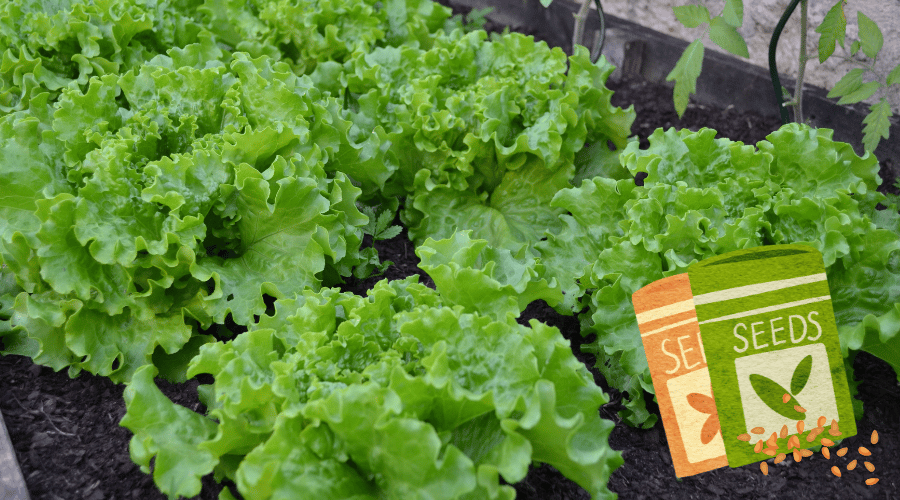
Greenhouse Growing: Lettuce
Growing your own lettuce at home offers a range of benefits. On a practical level, it can save you money on your food shop by providing a convenient source of fresh leafy greens - basically for free after paying for the initial seeds and compost. On a personal level, growing your own lettuce can be a satisfying and enjoyable hobby. It's such a simple salad item, yet after successfully growing from seed, and harvesting it yourself provides a sense of accomplishment and connection to the natural world.
Popular Homegrown Lettuce Varieties
There are many different varieties of lettuce seeds that you can grow in the UK, including:
Butterhead Lettuce
This type of lettuce has soft, buttery leaves and a mild, sweet flavor. It's great for salads and sandwiches.
Cos Lettuce
Also known as romaine lettuce, cos lettuce has long, crisp leaves and a slightly bitter taste. It's often used in Caesar salads.
Iceberg
Probably the most well-known lettuce in England, this variety of lettuce is known for its crunchy, watery leaves and mild flavor. It's a popular choice for salads and sandwiches.
Little Gem Lettuce
Little Gem lettuce is a small, compact variety of lettuce with sweet, crunchy leaves. It's great for adding to salads or using as a garnish.
Red Lettuce
Red lettuce varieties have deep red or purple leaves and a slightly sweet, spicy flavor. They add a splash of color to salads and make a beautiful garnish.
Step-by-Step Guide to Optimal Lettuce Growing
Growing lettuce from seeds in your own garden is a fun and rewarding way to enjoy fresh, healthy greens all season long. Here's our simple yet effective step-by-step guide to help you get started:
- Lettuce can be grown in trough containers in the greenhouse, or in raised beds in the garden. Choose a spot that gets plenty of sunlight. Lettuce grows best in full sun to partial shade, so aim for at least 6 hours of sunlight per day.
- Preparing the soil before seeding. Lettuce seeds prefer well-draining soil with a pH between 6.0 and 6.8. If your soil is too alkaline or lacks nutrients, consider adding compost or well-rotted manure to improve the soil structure. You can check the pH level of your soil by getting a plant pH checker.
- Next up, it's time to sow the seeds. Lettuce seeds are very small, so they should be sown thinly in rows about half an inch deep. Water the seeds gently to help them settle into the soil, and keep the soil moist until the seeds germinate. During this germination period, it's always best to keep them in the greenhouse, even if you plan on moving them to a raised bed later on.
- Thin the seedlings out. Once the seedlings have reached about 2 inches tall, thin them out so that they are spaced about 6 inches apart. This will give the lettuce plants room to grow and thrive.
- Fertilise and water. Lettuce is a light feeder, so it doesn't require a lot of fertilisation. However, you can give your plants a boost by applying a balanced fertiliser once a month. Water your lettuce regularly to keep the soil evenly moist, but be careful not to overwater as this can lead to rot.
- Protect from pests. Lettuce is prone to attacks from slugs, aphids, and caterpillars. To prevent these pests from ruining your crop, consider using organic pest control methods such as traps, barriers, or natural predators.
- Lettuce is ready to harvest when the leaves are fully developed and the plant has reached the desired size. To harvest, simply cut the leaves off at the base of the plant using a clean, sharp knife. Enjoy your homegrown lettuce fresh in salads, sandwiches, or any other dish!
How To Protect Your Lettuce From Slugs
The worst culprit to nibble on your lettuce leaves are slugs. To help you deter them from eating away your precious lettuce saplings, here are a few tips to help protect them:
- Keep your garden clean: Slugs and snails are attracted to moist, cool environments, so removing debris from your garden can help reduce the number of these pests.
- Use slug bait: Slug bait is a chemical treatment that is safe for use in gardens and can be effective in controlling slugs and snails. Follow the instructions on the package for application and use.
- Set up a slug and snail trap: You can create a simple trap for slugs and snails by placing a shallow dish filled with beer in your garden. The slugs and snails will be attracted to the beer and will fall into the dish, where they will drown.
- Use physical barriers: Slugs and snails can't crawl over sharp or rough surfaces, so you can use physical barriers to keep them away from your plants. For example, you can surround your lettuce plants with a ring of crushed eggshells, gravel, or copper strips.
- Plant slug-resistant plants: Some plants are naturally resistant to slugs and snails, so consider incorporating these into your garden. Examples include lavender, rosemary, and thyme.
By following these tips, you can help protect your lettuce plants from pests like slugs and snails and enjoy a healthy, pest-free garden.










No comments.